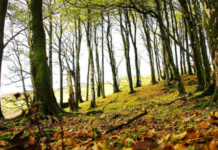
Incense: Crafting and Use of Magickal Scents
, by Carl F. Neal
Llewellyn Worldwide, 0738703362, 149 pp. (incl. appendices, glossary, bibliography and index), 2003
In the introduction Neal lets the reader know that this will be a different sort of book, noting that it is not intended to make large quantities of incense, or incense for commercial purposes, as these often use synthetic materials. Neal prefers a more personal and natural approach to incense making. Incense covers a variety of techniques including stick, joss, cone and loose incense making, completely naturally. You won’t find any synthetic or dipped incense recipes in this book, and, if you’ll forgive the pun, it’s a breath of fresh air.
Brief histories of incense making around the world are given, acknowledging different philosophies and traditions. Also noting that many so-called ‘traditional’ recipes may only go back 10-20 years, and while still useful, may not really be historically accurate, but reminds the reader that this doesn’t diminish their wonderful scent. He also gets into various incense philosophies, the ethics of incense making, for example whether or not to use animal material (he advises not), rare poached plants, possible attempts at fraud by merchants of incense materials, etc.
Neal discusses the possible dangers of synthetic based dipped incenses, the possible toxins and harmful effects, as well as the dangers of saltpetre found in most commercial charcoals, and why he prefers to use more natural materials. He seems to have a special reverence for Japanese incense making techniques, philosophies and practices, and several are detailed within.
A variety of recipes are offered, including numerous ‘traditional’ scents, and ritual-specific recipes such as ‘Sanctification’, ‘Handfasting’ and even ‘Happy Cats’, followed by a chapter on experimentation, which he encourages, whereas some other books don’t mention or avoid for fear of making something ‘dangerous’, but without the use of saltpetre, as Neal advises, this is unlikely to be a problem.
Advises making nice smelling incense, but also notes that one might want to ‘make incense that does not create a pleasing scent, strictly because of the magickal alignment of the materials’ (pg 40-41), or perhaps ‘if you’re a prankster, you’ll even find that your incense making skills can be used to create some pretty terrible smells’1 – though he does note that no recipes of this type can be found in this book.
Wonderful as it is, I do have a few criticisms. There are a few typos, and it often gets repetitive in parts; indeed, there is even a small section that is repeated in its entirety.2 While there are a few pictures, step-by-step illustrations to go along with the text, though detailed, would have been appreciated, as not everyone will be able to visualize the steps clearly, especially those who have never made incense before. Appendix B lists numerous suppliers in the United States, with a handful in the UK, but none in Canada. It would be nice if, in future editions, the appendix branched out a bit to include more locals.
Very easy to use, Incense offers step-by-step instructions on how to acquire tools, materials and various incense burners. This is an excellent book for those with an interesting in incense making or who are just starting out, and as Neal notes, even if you don’t end up making your own incense, you’ll have a much better idea of what goes into the process and which things to consider when purchasing off the shelf at your local shop.








